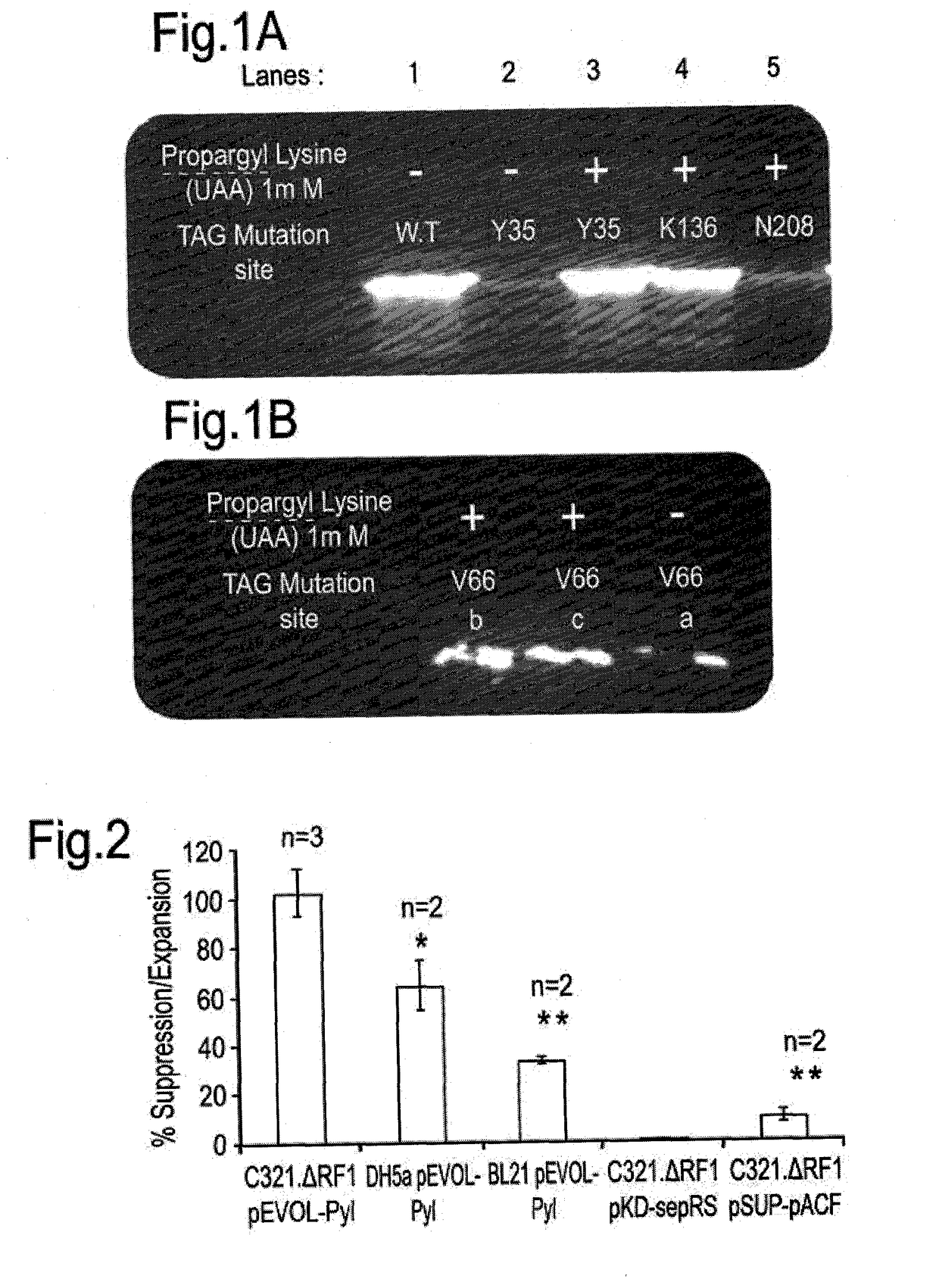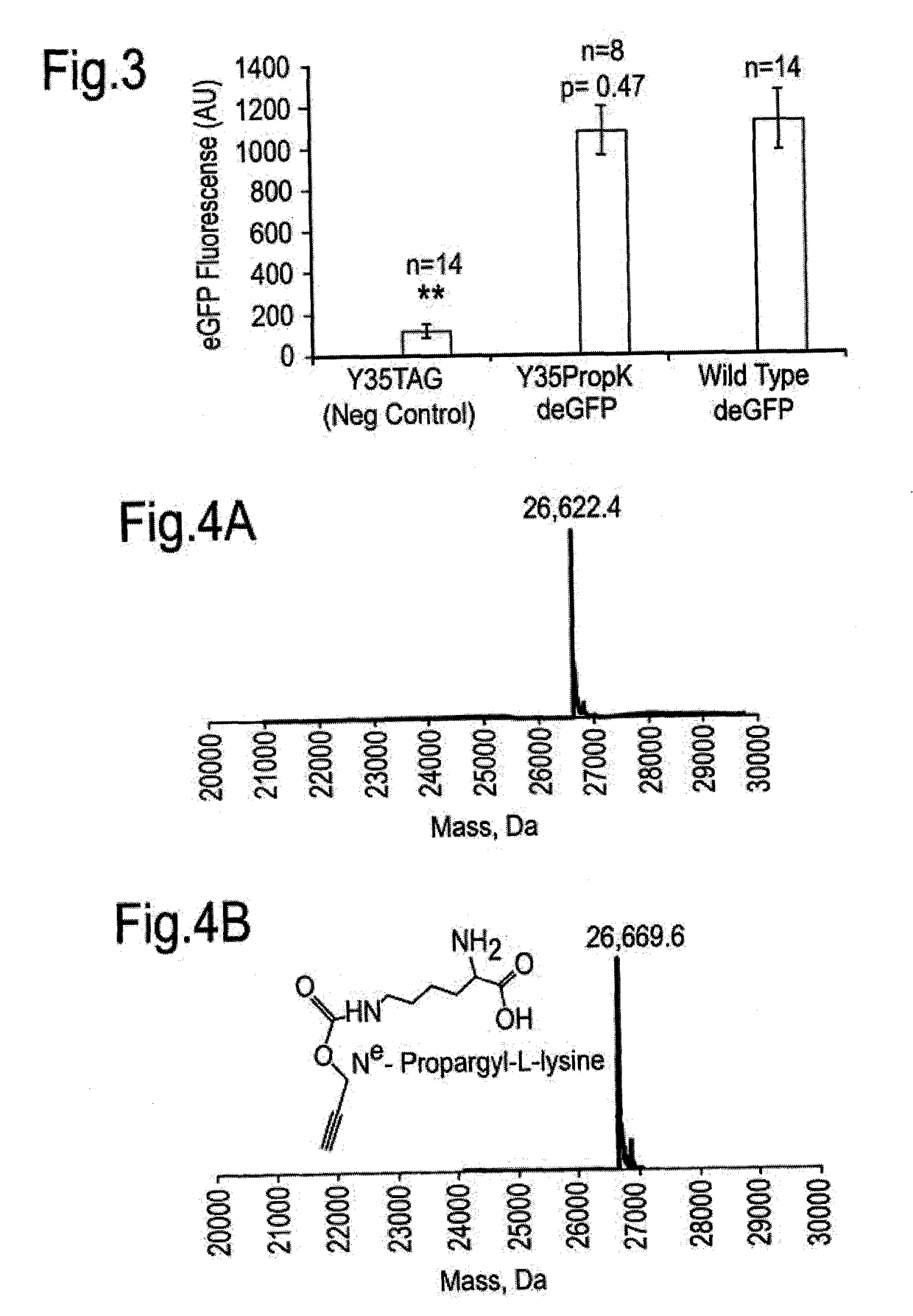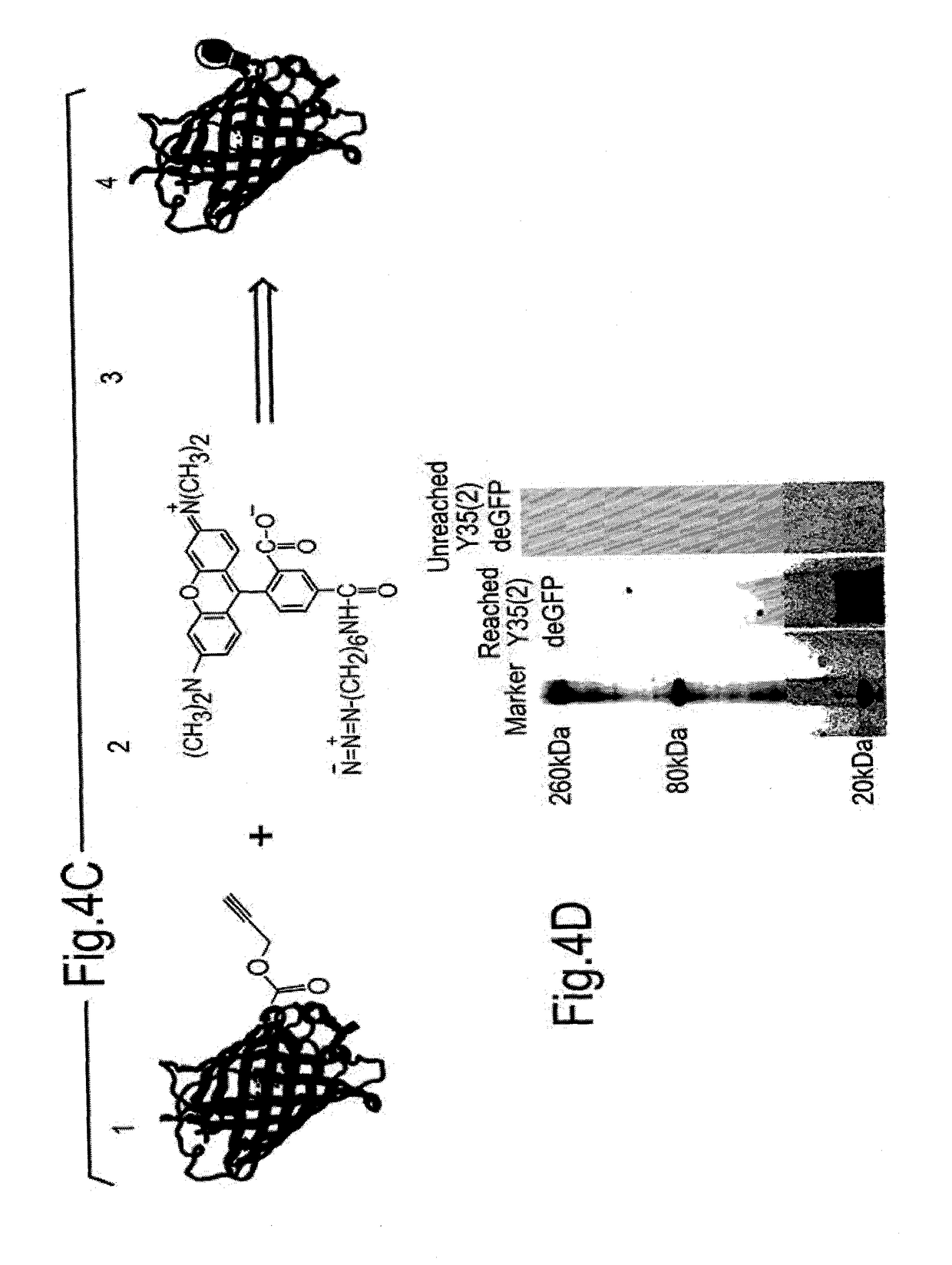Genetically expanded cell free protein synthesis systems, methods and kits
a cell-free protein and synthesis system technology, applied in the field of genetically expanded cell-free protein synthesis systems, methods and kits, can solve the problems of limiting the genetic expansion repertoire, labor and time needed for aars purification and trna synthesis, and challenging insoluble aars purification,
- Summary
- Abstract
- Description
- Claims
- Application Information
AI Technical Summary
Benefits of technology
Problems solved by technology
Method used
Image
Examples
example 1
Effective Cell Free Protein Synthesis Incorporating a Non-Natural Amino Acid: Results from a Reporter System
[0184]The recoded E. coli strain (GRO):C321.ΔprfA was utilized as it promotes the replacement of the message encoded by the amber nonsense codon, i.e. genomic TAG stop codons are replaced and the translation of a UAG triplet is translated as a sense codon, instead of as a nonsense codon.
[0185]The medium-low copy number pEVOL plasmid containing the OTS genes; mM-PylRS / mM-tRNAcuapyl was transformed to the GRO strain. This vector “pyl-OTS”, and several other OTS plasmids used in this study tested are specified hereinbelow in Table 1 and 2.
TABLE 1A matrix describing the different transformations performedin each experiment conducted in this studypEVOLpEVOLpSUPpKDPylRSPylRS-AFpACFSepRSPlasmid / (Pyl-(PylAF-(pACF-(Sep-NoStrainOTS)aOTS)bOTS)cOTS)dOTSC321.ΔprfA+++++C321. ΔprfA EXP+C321 (i.e. prfA+)+BL21(DE3)+DH5α+aPyl-OTS: Mm-pyrrolysil synthetase / Mm-tRNACUAPyl (Blight et al., Nature 43...
example 2
Effective Cell Free Protein Synthesis Incorporating a Non-Natural Amino Acid: Validation in Two Enzyme Assays
[0220]In order to demonstrate successful incorporation of the non-natural Propargyl-Lysine (UAA) amino acid site specifically into a target protein, which is not a reporter system, activity assays for proteins prepared using the cell free protein synthesis systems of this invention were investigated. Toward this end, the target proteins: Zymomonas mobilis alcohol dehydrogenase II enzyme (ADHII) and the E. coli copper efflux oxidase (CueO) enzyme were synthesized via the cell free protein synthesis systems of this invention incorporating the non-natural amino acid Propargyl-Lysine.
[0221]In order to demonstrate that genetically expanded CFPS produces correctly folded and active enzymes, the system was validated using two enzymes. Expression of the enzymes Zymomonas mobilis Alcohol dehydrogenase (ZmADH)—a 382 amino acids enzyme dimer and Copper efflux oxidase—a 488 residue enzym...
example 3
Effective Cell Free Protein Synthesis Incorporating a Second Non-Natural Amino Acid: Δ-Thio-ε-Boc-Lysine (TBL)
[0234]In order to demonstrate successful incorporation of another non-natural amino acid, the non-natural Δ-Thio-ε-Boc-Lysine (UAA) amino acid was incorporated site specifically into a target protein. Toward this end, the EGFP variant that optimized for cell-free protein synthesis (deGFP) was utilized, which was expressed under the control of the OR2-OR1-PR promoter, similar to the method as described in Example 1.
[0235]Following preparation of the cell free protein synthesis system as described above utilizing the pEVOL derivative plasmids expressing the OTS in the E. coli strain C321.ΔPrfA, cell free protein synthesis was carried out in the presence of wild type Mm-pyl synthetase and EPI mass spectrometry conducted. FIG. 8 demonstrates the results of the EPI mass spectrometry showing a clear peak at 26721.7 Dalton, which correlates within 1 Dalton to the calculated mass of...
PUM
| Property | Measurement | Unit |
|---|---|---|
| Efficiency | aaaaa | aaaaa |
Abstract
Description
Claims
Application Information
 Login to View More
Login to View More - R&D
- Intellectual Property
- Life Sciences
- Materials
- Tech Scout
- Unparalleled Data Quality
- Higher Quality Content
- 60% Fewer Hallucinations
Browse by: Latest US Patents, China's latest patents, Technical Efficacy Thesaurus, Application Domain, Technology Topic, Popular Technical Reports.
© 2025 PatSnap. All rights reserved.Legal|Privacy policy|Modern Slavery Act Transparency Statement|Sitemap|About US| Contact US: help@patsnap.com



